Module 6 - Introduction to Electronic Emission, Tubes, and Power
Supplies
Pages i,
1-1,
1-11,
1-21,
1-31,
1-41,
1-51,
2-1,
2-11,
2-21,
2-31,
3-1,
3-11,
3-21,
3-31,
3-41,
3-51, AI-1, Index
Chapter 1
Introduction to ELECTRON TUBES
Learning Objectives Learning objectives are stated at the beginning of each chapter. These learning objectives serve as a preview
of the information you are expected to learn in the chapter. The comprehensive check questions are based on the
objectives. By successfully completing the OCC/ECC, you indicate that you have met the objectives and have learned
the information. The learning objectives are listed below. Upon completion of this chapter, you will be
able to:
1. State the principle of thermionic emission and the Edison Effect and give the reasons for electron movement in
vacuum tubes. 2. Identify the schematic representation for the various electron tubes and their elements.
3. Explain how the diode, triode, tetrode, and pentode electron tubes are constructed, the purpose of the
various elements of the tube, and the theory of operation associated with each tube.
4. State the advantages, disadvantages, and limitations of the various types of electron tubes.
5. Describe amplification in the electron tube, the classes of amplification, and how amplification is obtained.
6. Explain biasing and the effect of bias in the electron tube circuit. 7. Describe the effects the
physical structure of a tube has on electron tube operation and name the four most important tube constants that
affect efficient tube operation. 8. Describe, through the use of a characteristic curve, the operating
parameters of the electron tube. Introduction to ELECTRON TUBES In previous study you have learned that current flows in the conductor of a completed circuit when a voltage
is present. You learned that current and voltage always obey certain laws. In electronics, the laws still apply.
You will use them continuously in working with electronic circuits. One basic difference in electronic
circuits that will at first seem to violate the basic laws is that electrons flow across a gap, a break in the
circuit in which there appears to be no conductor. a large part of the field of electronics and the entire field
of electron tubes are concerned with the flow and control of these electrons "across the gap." The following
paragraphs will explain this interesting phenomenon. THERMIONIC EMIsSION You will
remember that metallic conductors contain many free electrons, which at any given instant are not bound to atoms.
These free electrons are in continuous motion. The higher the temperature of the conductor, the more agitated are
the free electrons, and the faster they move. a temperature can be
reached where some of the free electrons become so agitated that they actually escape from the
conductor. They "boil" from the conductor's surface. The process is similar to steam leaving the surface of
boiling water. Heating a conductor to a temperature sufficiently high causing the conductor to give off
electrons is called THERMIONIC EMIsSION. The idea of electrons leaving the surface is shown in
figure 1-1. 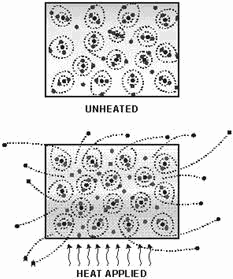
Figure 1-1. - Thermionic emission. Thomas Edison discovered the principle of thermionic
emission as he looked for ways to keep soot from clouding his incandescent light bulb. Edison placed a metal plate
inside his bulb along with the normal filament. He left a gap, a space, between the filament and the plate. He
then placed a battery in series between the plate and the filament, with the positive side toward the plate and
the negative side toward the filament. This circuit is shown in figure 1-2.
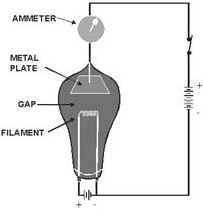
Figure 1-2. - Edison's experimental circuit. When Edison connected the filament battery and allowed the filament to heat until it glowed, he discovered
that the ammeter in the filament-plate circuit had deflected and remained deflected. He reasoned that an
electrical current must be flowing in the circuit - EVEN ACROSS The GAP between the filament and
plate. Edison could not explain exactly what was happening. At that time, he probably knew less about what
makes up an electric circuit than you do now. Because it did not eliminate the soot problem, he did little with
this discovery. However, he did patent the incandescent light bulb and made it available to the scientific
community. Let's analyze the circuit in figure 1-2. You probably already have a good idea of how the
circuit works. The heated filament causes electrons to boil from its surface. The battery in the filament-plate
circuit places a Positive
charge on the plate (because the plate is connected to the positive side of the battery). The electrons (negative
charge) that boil from the filament are attracted to the positively charged plate. They continue through the
ammeter, the battery, and back to the filament. You can see that electron flow across the space between filament
and plate is actually an application of a basic law you already know - UNLIKE CHARGES ATTRACT.
Remember, Edison's bulb had a vacuum so the filament would glow without burning. Also, the space between the
filament and plate was relatively small. The electrons emitted from the filament did not have far to go to reach
the plate. Thus, the positive charge on the plate was able to attract the negative electrons. The key to
this explanation is that the electrons were floating free of the hot filament. It would have taken hundreds of
volts, probably, to move electrons across the space if they had to be forcibly pulled from a cold filament. Such
an action would destroy the filament and the flow would cease. The application of thermionic emission that
Edison made in causing electrons to flow across the space between the filament and the plate has become known as
the EDIsON EFFECT. It is fairly simple
and extremely important. Practically everything that follows will be related in some way to the Edison
effect. Be sure you have a good understanding of it before you go on. Q1. How can a sheet of copper be
made to emit electrons thermionically? Q2. Why do electrons cross the gap in a vacuum tube? The DIODE TUBE The diode vacuum tube we are about to study is really Edison's old
incandescent bulb with the plate in it. Diode means two elements or two electrodes, and refers to the two parts
within the glass container that make up the tube. We have called them filament and plate. More formally, they are
called
CATHODE and PLATE, respectively. Sometimes the filament is called a
HeatER, for obvious reasons-more on this later. Within a few years after the discovery of the
Edison effect, scientists had learned a great deal more than Edison knew at the time of his discovery. By the
early 1900s, J.J. Thomson in England had discovered the electron. Marconi, in Italy and England, had demonstrated
the wireless, which was to become the radio. The theoretical knowledge of the nature of electricity and things
electrical was increasing at a rapid rate. J.A. Fleming, an English scientist, was trying to improve on
Marconi's relatively crude wireless receiver when his mind went back to Edison's earlier work. His subsequent
experiments resulted in what became known as the FLEMING VALVE (the diode), the first major step
on the way to electronics.
Operation of The DIODE TUBE Before learning about Fleming's valve, the forerunner of the
modern diode, let's look at Edison's original circuit. This time, however, we'll draw it as a schematic diagram,
using the symbol for a diode instead of a cartoon-like picture. The schematic is shown in figure 1-3. 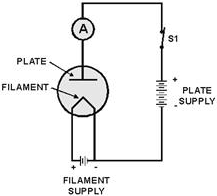
Figure 1-3. - Schematic of Edison's experimental circuit. Note that this is really two
series circuits. The filament battery and the filament itself form a series circuit. This circuit is known as the
filament circuit.
The path of the second series circuit is from one side of the filament, across the space to the plate,
through the ammeter and battery, then back to the filament. This circuit is known as the plate circuit.
You will note that a part of the filament circuit is also common to the plate circuit. This part enables the
electrons boiled from the filament to return to the filament. No electron could flow anywhere if this return path
were not completed. The electron flow measured by the ammeter is known as plate current. The voltage
applied between the filament and plate is known as plate voltage. You will become familiar with these terms and
with others that are commonly used with diodes and diode circuits as we progress. Diode Operation
with a Positive Plate
Fleming started with a two-element tube (diode) similar to Edison's and at first duplicated Edison's experiment.
The results are worth repeating here. Look at figure 1-3 again. With the plate Positive
relative to the filament, the filament hot, and the circuit completed as shown, the ammeter detected a current
flowing in the plate circuit. Because current is the same in all parts of a series circuit, we know that the same
current must flow across the space between filament and plate. We know now that the electrons boiled from the
heated filament are Negative and are attracted to the Positive plate because
UNLIKE CHARGES ATTRACT. Diode Operation with a Negative Plate Fleming's
next step was to use a similar circuit but to reverse the plate battery. The circuit is shown in figure 1-4. 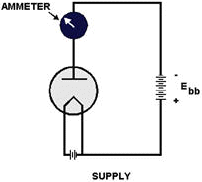
Figure 1-4. - Diode with a negative plate.
With the plate Negative relative to the filament, the filament hot,
and the circuit completed as shown, the ammeter indicated that ZERO current was flowing in the
plate circuit. Fleming found that the Negative charge on the plate, relative to the
filament,
CUT ofF the flow of plate current as effectively as if a VALVE were used to stop
the flow of water in a pipe.
You have all of the facts available that Fleming had. Can you give an explanation of why the diode
cuts off current when the plate is negative? Let's put the facts together. The filament is hot and
electrons boil from its surface. Because the filament is the only heated element in the diode, it is the
ONLY
source of electrons within the space between filament and plate. However, because the plate is Negative
and the electrons are Negative, the electrons are repelled back to the filament. Remember that
LIKE CHARGES REPEL. If electrons cannot flow across the space, then no electrons can flow
anywhere in the plate circuit. The ammeter therefore indicates ZERO. It might seem to you
that electrons flow from the negative plate to the positive filament under these conditions. This is NOT
the case. Remember that it takes a heated element to emit electrons and that the filament is the only heated
element in the diode. The plate is cold. Therefore, electrons cannot leave the plate, and plate-to-filament
current cannot exist. The following is a summary of diode operation as we have covered it to this point:
Assume that all parts of the circuit are operable and connected.
· PLATE CURRENT FLowS When The PLATE Is Positive.
· PLATE CURRENT
Is CUT ofF When The PLATE Is Negative.
· PLATE CURRENT FLowS ONLY IN ONE DirectION-FROM
The FILAMENT to The PLATE. Measuring Diode Voltages As you know, it is impossible
to have a voltage at one point, because voltage is defined as a Difference of
POTENTIAL between two points. In our explanation above we referred to plate voltage. To be exactly right,
we should refer to plate voltage as the Voltage BETWEEN PLATE and FILAMENT.
Plate voltages, and others that you will learn about soon, are often referred to as if they appear at one point.
This should not confuse you if you remember your definition of voltage and realize that voltage is always measured
between two points. M1 and M2 in figure 1-5 measure plate voltage and filament voltage, respectively.
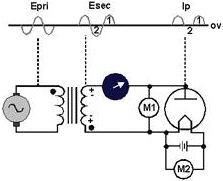
Figure 1-5. - Alternating voltage on the plate.
The reference point in diode and other tube circuits is usually a common point between the individual
circuits within the tube. The reference point (common) in figure 1-5 is the conductor between the bottom of the
transformer secondary and the negative side of the filament battery. Note that one side of each voltmeter is
connected to this point. Q3. Name the two series circuits that exist in a diode circuit.
Q4. Before a diode will conduct, the cathode must be what polarity relative to the plate?
Diode Operation with an Alternating Voltage on the Plate After experimenting with a
positive plate and a negative plate, Fleming replaced the direct voltage of the battery with an alternating
voltage. In our explanation, we'll use a transformer as the source of alternating voltage. The circuit is shown in
figure 1-5.
Note that the only real difference in this circuit from the previous ones is the transformer. The transformer
secondary is connected in series with the plate circuit - where the plate battery was previously. Remember
from your study of transformers that the secondary (output) of a transformer always produces an alternating
voltage. The secondary voltage is a sine wave as shown in the figure. You'll remember that the sine wave
is a visual picture, a graph of the change in alternating voltage as it builds from zero to a maximum value
(positive) and then drops to zero again as it decreases to its minimum value (negative) in the cycle.
Assume that the polarity across the secondary during the first half-cycle of the input ac voltage is as shown in
the figure. During this entire first half-cycle period, the plate's polarity will be Positive.
Under this condition, plate current flows, as shown by the ammeter. The plate current will rise and fall
because the voltage on the plate is rising and falling. Remember that current in a given circuit is directly
proportional to voltage.
During the second half-cycle period, plate's polarity will be Negative. Under this condition, for
this entire period, the diode will not conduct. If our ammeter could respond rapidly, it would drop to zero. The
plate-current waveform (Ip) in figure 1-5 shows zero current during this period. Here is a summary of
effects of applying alternating voltage to the plate of the diode: 1. Diode plate current flows during
the positive half-cycle. It changes value as the plate voltage rises and falls. 2. The diode cuts off
plate current during the entire period of the negative half-cycle. 3. Diode plate current flows in
PULSES because the diode cuts off half the time. 4. Diode plate current can flow in only one
direction. It is always a direct current. (In this case PULSATING DC - one that flows in pulses.)
5. In effect, the diode has caused an alternating voltage to produce a direct current. The ability
to obtain direct current from an ac source is very important and one function of a diode that you will see again
and again wherever you work in electronics.
The circuits that we have discussed up to this point were chosen to show the general concepts
discovered by Edison and Fleming. They are not practical because they do no useful work. For now, only the
concepts are important. Practical circuitry will be presented later in this chapter as you learn specific points
about the construction, limitations, and other characteristics of modern diode tubes. Q5. An ac voltage
is applied across a diode. The tube will conduct when what alternation of ac is applied to the plate?
Q6. What would be the output of the circuit described in question 5? DIODE CONSTRUCTION
Diode tubes in present use are descendants of Fleming's valve. There is a family resemblance, but many changes
have been made from the original. Diodes are both smaller and larger, less powerful and more powerful, and above
all, more efficient and more reliable. The search for greater efficiency and reliability has resulted in many
physical changes, a few of which will be covered in the next paragraphs. Most of what is said here about
construction and materials will be true of all electron tubes, not just diodes. Filaments
Modern filaments in ALL tubes last longer, emit greater amounts of electrons for a given size, and many operate at
a lower temperature than in the early days. Most improvements have resulted from the use of new materials and from
better quality control during manufacture. Three materials that are commonly used as filaments are
tungsten, thoriated tungsten, and oxide-coated metals. Tungsten has great durability but requires large
amounts of power for efficient thermionic emission. Thoriated-tungsten filaments are made of tungsten with a very
thin coat of thorium, which makes a much better emitter of electrons than just tungsten. Oxide-coated filaments
are made of metal, such as nickel, coated with a mixture of barium and strontium oxides. The oxide coat, in turn,
is coated with a one- molecule-thick layer of metal barium and strontium. Oxide coating produces great emission
efficiency and long life at relatively low heat. A major advance in electronics was the elimination of
batteries as power sources for tubes. Except in electronic devices designed to be operated away from the ac power
source, alternating current is used to heat filaments. Voltage may be supplied by a separate filament
transformer or it may be taken from a filament winding that is part of a power transformer. The actual voltage may
vary from 1 volt up and depends on the design of the tube. Common filament voltages are 5.0, 6.3, and 12.6 volts
ac. Filaments may be connected in series with other tube filaments or may be in parallel with each other. This is
determined by the equipment designer.
Cathodes As was mentioned previously, a more formal name for the electron-emitting
element in a tube is the CATHODE. Cathodes in all tubes, not just diodes, are of two
general types, either directly heated or indirectly heated. Each has its advantages and disadvantages.
1-8
DirectLY HeatED. - The filament that has been discussed so far is the directly heated
cathode. Directly heated cathodes are fairly efficient and are capable of emitting large amounts of electrons.
Figure 1-6 shows this type and its schematic symbol.
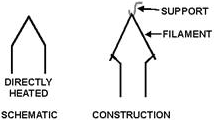
Figure 1-6. - Cathode schematic representation. An added advantage of this type of filament is the rapidity with which it reaches electron-emitting
temperature. Because this is almost instantaneous, many pieces of electronic equipment that must be turned on at
infrequent intervals and be instantly usable have directly heated cathode tubes. There are disadvantages.
Because of its construction, parts of the filament are closer to the plate than other parts. This results in
unequal emission and a loss of efficiency. Another disadvantage occurs when dc is used to heat a filament. The
filament represents a resistance. When current flows through this resistance, a voltage drop occurs. The result
is that one side of the resistance, or filament, is more negative than the other side. The negative side of the
filament will emit more electrons than the positive side; which, again, is less efficient than if the filament has
equal emission across its entire surface.
When ac is the source of filament power, it causes a small increase and decrease of temperature as it rises and
falls. This causes a small increase and decrease of emitted electrons. This effect is not too important in many
diode circuits, but it is undesirable in other tube circuits. INDirectLY HeatED. - Figure
1-7 shows this type of cathode and its schematic symbol. Indirectly heated cathodes are always composed of
oxide-coated material. The cathode is a cylinder, a kind of sleeve, that encloses the twisted wire filament. The
only function of the filament is to heat the cathode. The filament is often called a heater when used in this
manner. 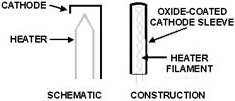
Figure 1-7. - Indirectly heated cathode schematic.
Some schematics do not show heaters and heater connections. Heaters, of course, are still present in
the tubes, but their appearance in a schematic adds little to understanding the circuit. The heater is not
considered to be an active element. For example, a tube with an indirectly heated cathode and a plate is still
called a diode, even though it might seem that there are three elements in the tube. Because indirectly
heated cathodes are relatively large, they take longer to heat to electron-emitting temperature. Once up to
temperature, however, they do not respond to the small variations in heater temperature caused by ac fluctuations.
Because of the inherent advantages, most tubes in use today have indirectly heated cathodes. Q7.
Besides tungsten, what other materials are used for cathodes in vacuum tubes? Q8. What is the advantage of
directly heated cathodes? Plates Edison's plate was just that-a plate, a flat
piece of metal. Plates are no longer flat but are designed in many different shapes. Figure 1-8 shows two diodes,
one with a directly heated cathode, the other with an indirectly heated cathode. Each plate is cut away to show
the internal position of elements and the plate shapes.
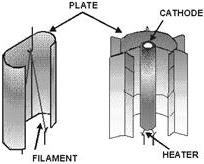
Figure 1-8. - Cutaway view of plate construction. Plates must be able to hold up under the stress of heat created by the flow of plate currents and the
closeness of hot cathodes. They need to be strong enough to withstand mechanical shocks produced by vibration and
handling.
Some typical materials used for electron tube plates are tungsten, molybdenum, graphite, nickel, tantalum, and
copper.
Tube Bases The base shown in figure 1-9 has two functions. First, it serves as the
mounting for tube elements. Second, it serves as the terminal points for the electrical connections to the tube
elements. This is accomplished by molding or otherwise bringing pins (or prongs) through the base. The internal
ends of these pins are connected to tube elements. The pins themselves are male connections.
1-10
| - |
Matter, Energy,
and Direct Current |
| - |
Alternating Current and Transformers |
| - |
Circuit Protection, Control, and Measurement |
| - |
Electrical Conductors, Wiring Techniques,
and Schematic Reading |
| - |
Generators and Motors |
| - |
Electronic Emission, Tubes, and Power Supplies |
| - |
Solid-State Devices and Power Supplies |
| - |
Amplifiers |
| - |
Wave-Generation and Wave-Shaping Circuits |
| - |
Wave Propagation, Transmission Lines, and
Antennas |
| - |
Microwave Principles |
| - |
Modulation Principles |
| - |
Introduction to Number Systems and Logic Circuits |
| - |
- Introduction to Microelectronics |
| - |
Principles of Synchros, Servos, and Gyros |
| - |
Introduction to Test Equipment |
| - |
Radio-Frequency Communications Principles |
| - |
Radar Principles |
| - |
The Technician's Handbook, Master Glossary |
| - |
Test Methods and Practices |
| - |
Introduction to Digital Computers |
| - |
Magnetic Recording |
| - |
Introduction to Fiber Optics |
| Note: Navy Electricity and Electronics Training
Series (NEETS) content is U.S. Navy property in the public domain. |
Related Pages on RF Cafe - Tube
Base Diagrams - A Course in
Radio Fundamentals-Vacuum Tubes Sep 1942 QST -
Electrons on Parade
Tube Production Video by RCA c.1942 -
NEETS Module 6 - Vacuum Tubes
- Vacuum Tube Vendors
|
















